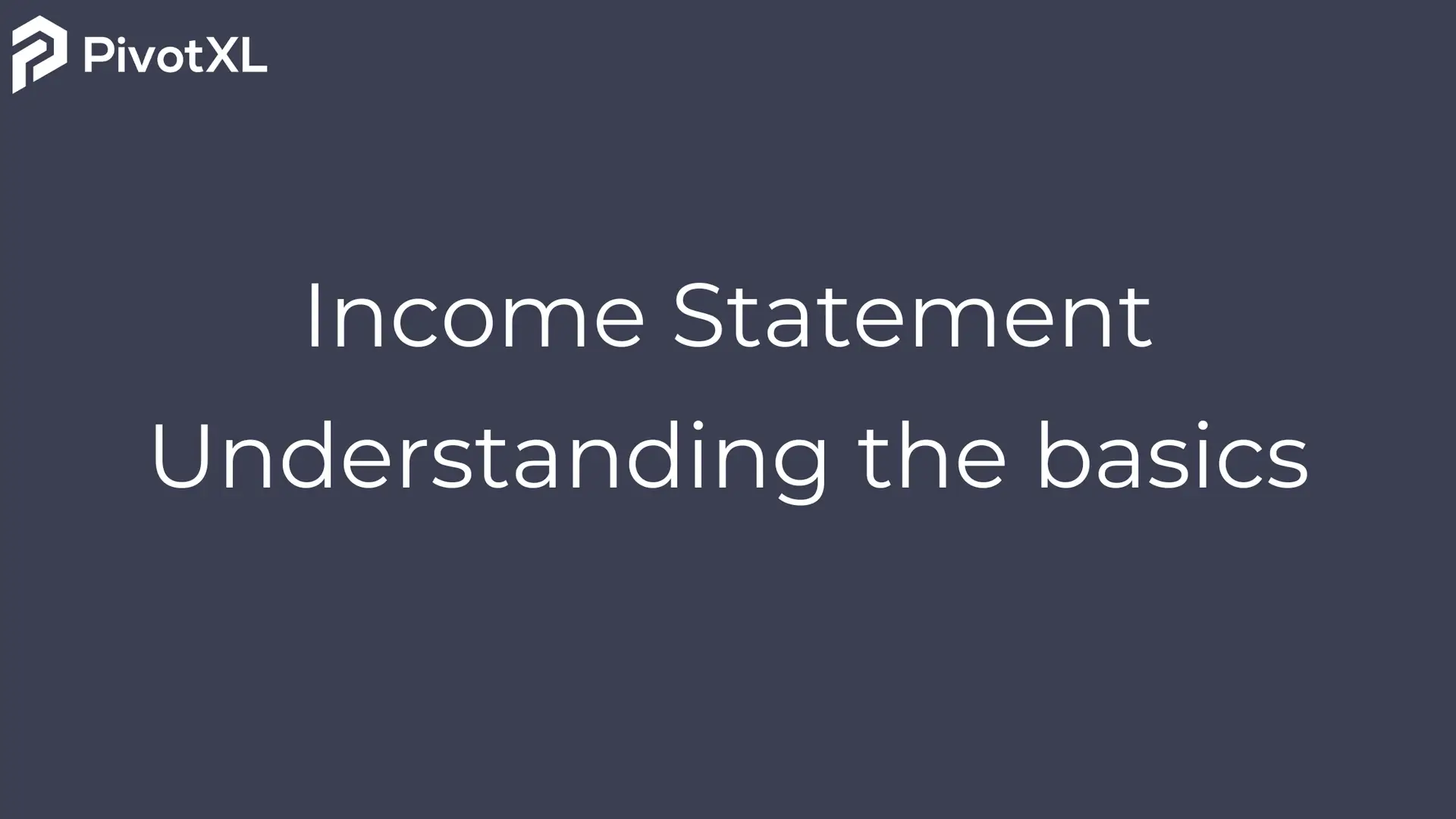An income statement, also known as a profit and loss (P&L) statement, is one of the most essential financial documents for any business. It provides a snapshot of a company’s financial performance over a specific period, detailing revenues, expenses, and profits. Whether you’re a small business owner, a financial analyst, or an entrepreneur, understanding how to read and create an income statement is critical to making informed decisions.
In this guide, we’ll dive into the components of an income statement, its importance, and how tools like PivotXL can streamline this process.
What Is an Income Statement?
The income statement is a financial report that shows the company’s revenues and expenses during a specific time period, such as a month, quarter, or year. It highlights the company’s profitability and is a crucial tool for investors, stakeholders, and management.
Key components of an income statement include:
- Revenue: This is the total income generated from sales or services before any expenses are deducted.
- Cost of Goods Sold (COGS): Direct costs associated with producing goods or delivering services.
- Gross Profit: The difference between revenue and COGS.
- Operating Expenses: These include salaries, rent, utilities, and other costs necessary to run the business.
- Operating Income: Calculated as gross profit minus operating expenses.
- Other Income and Expenses: Includes non-operational income and costs, such as interest or investments.
- Net Income: The bottom line — total revenue minus all expenses, showing the company’s profit or loss.
Why Is the Income Statement Important?
- Assessing Profitability: It helps identify if the business is generating enough revenue to cover its expenses.
- Making Strategic Decisions: Companies use it to evaluate financial health and make decisions about investments, cost-cutting, or expansion.
- Securing Funding: Investors and lenders often review income statements to assess the financial stability of a company.
- Compliance and Reporting: Income statements are required for tax filings and regulatory compliance.
Common Challenges in Preparing an Income Statement
- Data Collection: Gathering accurate and up-to-date financial data can be time-consuming and prone to errors.
- Complex Calculations: Ensuring accuracy in calculations, especially for businesses with multiple revenue streams, can be daunting.
- Frequent Updates: Businesses often need real-time updates to reflect the most accurate financial picture.
- Consistency and Standardization: Ensuring consistent formats and metrics across multiple periods is challenging.
How PivotXL Can Simplify the Process
Creating and managing income statements doesn’t have to be a cumbersome process. PivotXL, a leading financial planning and analysis tool, offers robust features that streamline income statement preparation.
Here’s how PivotXL helps:
- Centralized Data Management: PivotXL consolidates financial data from multiple sources into one platform, reducing the need for manual data entry.
- Real-Time Updates: With dynamic syncing capabilities, PivotXL ensures your income statement is always up-to-date.
- Automated Calculations: PivotXL automates complex calculations, minimizing errors and saving valuable time.
- Customizable Templates: Generate income statements using standardized or customized templates, ensuring compliance with regulatory requirements and internal policies.
- Collaboration Features: Teams can collaborate on financial reports in real-time, enhancing accuracy and efficiency.
Conclusion
An accurate and well-structured income statement is indispensable for understanding your business’s financial health. While preparing one can be challenging, tools like PivotXL simplify the process by automating data collection, calculations, and reporting. This not only saves time but also ensures accuracy, enabling businesses to focus on strategic growth.
Whether you’re managing a startup or a multinational corporation, leveraging modern financial tools can make all the difference in staying competitive and compliant.




